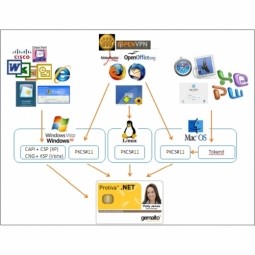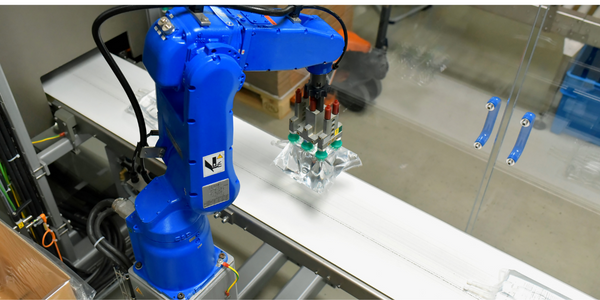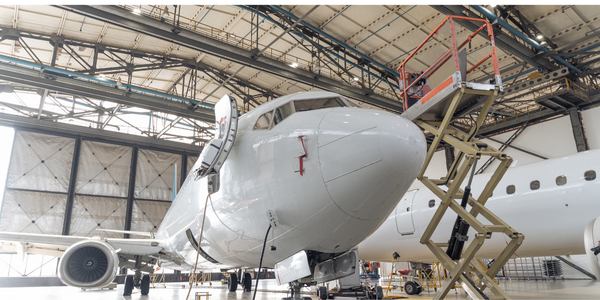
技术
- 分析与建模 - 预测分析
- 功能应用 - 企业资产管理系统 (EAM)
- 网络与连接 - WiFi
- 传感器 - 压力传感器
- 传感器 - 温度传感器
- 传感器 - 振动传感器
适用行业
- 生命科学
适用功能
- 维护
用例
- 预测性维护
客户
C&W 服务
关于客户
挑战
直到去年,C&W Services 一直在其领先的生命科学客户之一使用手动状态监测程序。最好的情况是每 30 天手动收集一次数据,即使在最关键的机器上也使用手持数据记录器。数据收集后,所有的数据分析都必须外包给第三方进行分析。这种方法有几个限制:
1. 计划外停机
2. 人力短缺
3. 安全和使用机器
4. 手动过程收集的读数不一致
解决方案
在评估了几个选项后,C&W Services 部署了 Petasense 基于 IIoT 的 PdM 技术来监控、分析和预测重要工业设备的健康状况,例如 AHU、泵、压缩机、排气扇和冷却器。 C&W Services 安装了名为 Motes 的三轴振动传感器,将它们连接到设施的 Wi-Fi 网络,并立即开始接收数据和可操作的情报。
“来自 Motes 的三轴数据通过增加触手可及的可用数据的数量和种类来提高诊断能力,”Auton 说。 “此外,当你在多个维度和机器上同时读取读数时,它们会变得更有价值。” “此外,它非常易于安装。” Petasense 技术的直观、简单和优雅给 Auton 留下了深刻的印象。对于 C&W 服务团队来说,易于实施及其在 LAN(IP 802.3 协议)上运行的能力是一个巨大的价值驱动因素。
运营影响

Case Study missing?
Start adding your own!
Register with your work email and create a new case study profile for your business.
相关案例.

Case Study
Corporate Identity Solution Adds Convenience to Beckman Coulter
Beckman Coulter wanted to implement a single factor solution for physical and remote logical access to corporate network. Bechman Coulter's users were carrying smart card badges for doors, but also needed a one-time password token to access to our corporate network when they were not in the office. They wanted to simplify the process.

Case Study
Embracing Business Success in Real Time
· Increase control over growing Big Data to improve business decisions · Manage data for 28,000 biotechnology stockkeeping units in the fields of microbiology, molecular biology, animal cell cultures, plant tissue cultures, and lab ware for laboratory chemicals · Accelerate report generation and analysis with real-time data

Case Study
Flow Robotics: Scaling Up Production and Accelerating Product Development with IoT
Flow Robotics, a Danish manufacturer, developed flowbot™ ONE pipetting robots to alleviate the strain on bioanalysts in life-science laboratories and hospitals across Europe. These robots were designed to automate part of the testing process, speeding up the time it takes to produce results and reducing pressure on staff. However, the company faced challenges in scaling up production and accelerating product development. High workloads and physically challenging conditions have long been an issue for laboratory professionals. Flow Robotics estimates that around half of medical lab technicians carry out the same arm movements for at least a quarter of their working day. The American Society for Clinical Pathology reported that 85% of laboratory professionals feel burnt out; 36% struggle with inadequate staffing; and 32% face a heavy workload and pressure to complete all testing on time.
Case Study
Material Intelligence at Ethicon: Sustaining Medical Device Manufacturability and Improving Patient Care
Ethicon, a world-class medical devices company, faced several challenges in its operations. The rapid selection of manufacturing materials compliant in global markets was critical to assure patients, practitioners, and purchasing organizations of the biocompatibility of their medical devices. Ensuring supply chain continuity and minimizing risks of obsolescence for medical devices due to regulatory changes were also crucial in meeting Ethicon’s ongoing commitment to maintaining patient care. Furthermore, the engineers at Ethicon were developing the next generation of medical devices and needed to access historical material data to accelerate new product development. The process of centralizing and digitalizing its materials information was a significant challenge that Ethicon needed to overcome.

Case Study
Revolutionizing Aerospace Industry with 3D Printing: A 63% Lighter Titanium Part
GE Aviation, a renowned name in the aerospace industry, recognized the potential of 3D printing technology in transforming the sector. The primary challenge was to reduce the weight of the aerospace parts, which would directly impact the fuel costs. A lighter airplane would mean lower fuel consumption, leading to cost savings and a smaller carbon footprint. However, achieving this weight reduction without compromising the strength and functionality of the parts was a significant challenge. Traditional manufacturing methods were not able to provide the desired weight reduction while maintaining the required stiffness and strength of the parts. The challenge was to find a solution that could create strong, light, and functional aerospace parts.
Case Study
IWT's Transformation: Customizing with Efficiency in IoT
IWT, a company specializing in the design, manufacture, and installation of washing systems for the life sciences and pharmaceutical industries, faced a significant challenge in managing its wide product portfolio. The company manufactures 45 different models, 60% of which are customized to some degree. This high level of customization, combined with limited production quantities, necessitated a controlled process for managing the release of engineering changes. The goal was to achieve efficiency, reduce process time, and better coordinate production throughout the organization. The need for strict compliance in heavily regulated industries further complicated the situation. IWT's existing PLM journey with Dassault Systèmes’ SOLIDWORKS for 3D CAD and Enovia for managing CAD data and Bills of Materials (BOMs) was proving inadequate. The system had limited part classification, no workflow, and no tool to ensure data consistency. The management of non-CAD documents was also a challenge, with information often difficult to find and access.







